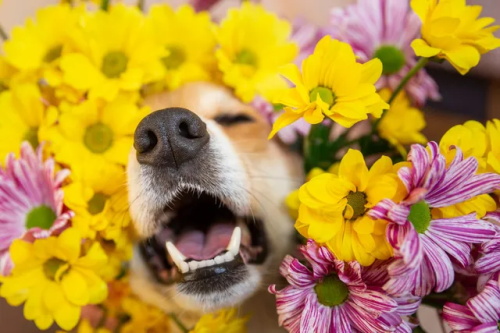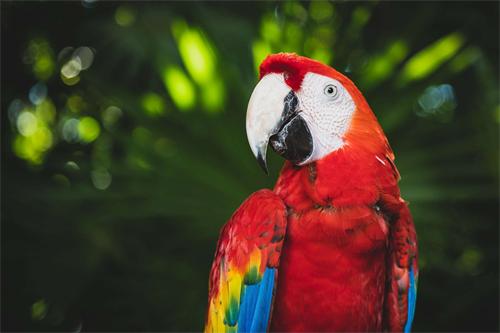Eco-Friendly Pet Products People Are Loving Now

The pet care industry has undergone a profound transformation in recent years. More and more pet owners are seeking products that go beyond comfort or practicality; they want products that are ethical, eco-conscious, and sustainable. As we head into 2025, a range of eco-friendly pet products are becoming increasingly popular—not just for novelty, but also because they address real environmental issues, from plastic pollution to animal welfare.
Why It Matters?
Pet Food and Climate Impact: Traditional pet food often relies heavily on animal-based ingredients, which carries significant environmental costs, such as land and water use and greenhouse gas emissions. Increasing the proportion of plant-based or less resource-intensive ingredients can significantly reduce a household's environmental footprint.
Packaging and Accessory Waste: Many dog toys, collars, beds, and feeding accessories are made from virgin plastic, synthetic fibers, or heavily processed materials. Disposal of these items contributes to plastic pollution and landfill overflow. Consequently, recycled materials, compostable materials, and closed-loop systems are on the rise.
Health, Welfare, and Ethics: Beyond environmental considerations, many eco-friendly products are better for pets' health (fewer toxic chemicals, more natural ingredients) and often benefit animal welfare in terms of raw material sourcing or the avoidance of harmful byproducts.
Key Product Trends Gaining Attention
1. Biodegradable and Compostable Waste Bags
Dog poop and cat litter are among the most persistent environmental burdens in everyday life. Traditional plastic bags can remain in landfills for hundreds of years, while biodegradable or compostable alternatives break down faster under the right conditions.
Modern biodegradable plastic bags are made from corn starch, plant polymers, or recycled materials. They perform just as well as plastic bags but are gentler on the environment. However, buyers should note that "biodegradable" does not necessarily mean compostable in all municipal systems—checking for certifications such as ASTM or European compostability standards can help ensure true eco-friendliness.
2. Sustainable Pet Toys: Recyclable, Biodegradable, and Durable
Playtime is crucial for pets' physical and mental well-being, but traditional toys often contain harmful dyes, microplastics, and synthetic fillers. Sustainable pet toys challenge this status quo—using organic cotton, natural rubber, hemp rope, or recycled plastic to create products that are both safe and durable.
Many innovative companies now offer closed-loop programs, allowing owners to return worn-out toys to recycling plants to be made into new ones. This "toy cycle" model significantly reduces waste. Other brands are experimenting with biodegradable plant-based fibers or modular toy designs, allowing parts to be replaced rather than discarded. These sustainable toys demonstrate that responsible design can coexist with fun, durability, and safety.
3. Sustainable and Ethical Pet Food
Pet food, especially meat-based options, has a significant environmental footprint. To address this, brands are launching ethically sourced, plant-based, and even lab-grown pet foods.
Lab-grown or "cultured" meat snacks will debut in 2024 and 2025, offering nutritional benefits comparable to traditional protein without the heavy ecological costs of animal farming. At the same time, plant-based dog foods are becoming increasingly nutritionally complete, with veterinary research demonstrating that they can meet a dog's dietary needs while reducing carbon emissions and water usage.

Pet food companies are also increasingly focusing on packaging. Compostable bags, paper bags, and recyclable tubs made from ocean-bound plastic are gradually replacing multi-layer plastics.
Nutrition, however, always comes first—especially for cats, who require certain amino acids naturally found in animal protein. The best eco-friendly pet food brands balance environmental ethics with scientific rigor to ensure nutritional integrity.
4. Accessories and apparel made from vegan, upcycled, and recycled materials
From collars and leashes to coats and beds, pet accessories are being redesigned with sustainability in mind. Instead of leather or virgin nylon, companies are embracing alternatives like cork, pineapple fiber, mushroom leather, and fabrics woven from recycled PET bottles.
Beds and plush toys are being filled with recycled fibers and covered in organic cotton or hemp blends. Some brands are further reducing waste by upcycling textile waste from the fashion or interiors industries.
These innovations not only keep discarded materials out of landfills but also reduce the energy and water footprint of production. Vegan leather collars and harnesses are particularly popular with pet owners who seek cruelty-free options that are as stylish as traditional designs.
5. Sustainable Pet Beds and Resting Supplies
Pet beds may not seem like a significant waste item, but millions of worn-out synthetic mattresses end up in landfills each year. Today, there are increasingly eco-friendly alternatives, such as natural latex foam, organic cotton covers, and fill made from recycled fibers.
Some companies are taking sustainability a step further by offering repair kits or recycling programs to refurbish old beds instead of discarding them. Modular bed systems allow only worn components to be replaced.
These small innovations make a big difference by reducing waste while providing pets with a comfortable, breathable, and non-toxic resting space.
6. Eco-Friendly Grooming and Hygiene Products
Pet shampoos, conditioners, wipes, and sprays can contain harsh chemicals that harm pets and waterways. Eco-friendly pet care products focus on plant-based ingredients like aloe vera, oatmeal, and coconut oil, and avoid sulfates and parabens.
Packaging is also undergoing a revolution: refillable aluminum bottles, shampoo bars, and compostable bags are replacing single-use plastics. Recycled brushes and bamboo combs are also adding to the sustainable grooming toolkit.
Pet owners are increasingly aware that what they put on their pets' fur ends up in the environment—so choosing natural, biodegradable formulas is beneficial for both parties.
7. Sustainable Waste and Waste Management
Cat litter has always been a particularly thorny environmental issue. Traditional clay cat litter requires open-pit mining, which damages ecosystems and consumes large amounts of water.
Today, eco-friendly cat litter is made from renewable and biodegradable materials like recycled paper, wheat, corn, wood chips, or coconut shells. Many of these cat litters are naturally absorbent, effectively controlling odors without the need for artificial fragrances.
For dog owners, compostable waste bags and proper waste disposal can reduce soil and water pollution. Pet owners are also turning to home composters designed specifically for pet waste, further closing the loop.
8. Eco-Friendly Pet Clothing: Dress with a Conscience
The rise of sustainable pet fashion reflects a deeper cultural shift. Today, pet owners view clothing not just as a cute accessory but as part of an ethical lifestyle. Jackets and sweaters made from organic cotton, bamboo, or recycled polyester offer warmth without the guilt.
Some boutique brands are upcycling vintage fabrics or deadstock into one-of-a-kind pet clothing, ensuring each design is unique. Even packaging in this sector is shifting toward minimalist or compostable materials.
Eco-friendly pet products are no longer just a passing trend; they're becoming an essential part of responsible pet ownership. From compostable trash bags and sustainable toys to vegan collars and plant-based diets, every aspect of the pet industry is moving toward a greener, healthier future.
Choosing products like these isn't just an act of environmental stewardship; it's an expression of love—love not only for your pet but for the planet we all share. The choices pet owners make today will impact the well-being of animals and ecosystems tomorrow.
As we head into 2025, one thing is clear: sustainability in pet care means more than just reducing harm; it means reimagining how joy, care, and responsibility can go hand in hand.



